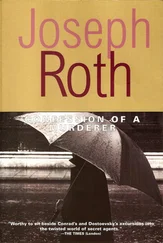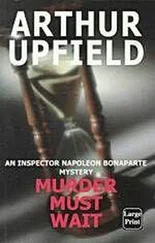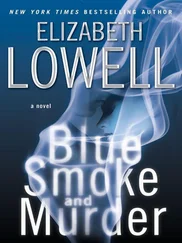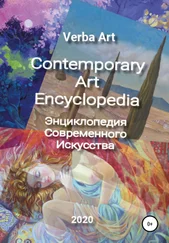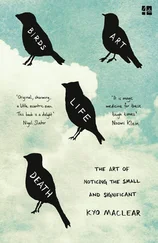Jose Somoza - Art of Murder
Здесь есть возможность читать онлайн «Jose Somoza - Art of Murder» весь текст электронной книги совершенно бесплатно (целиком полную версию без сокращений). В некоторых случаях можно слушать аудио, скачать через торрент в формате fb2 и присутствует краткое содержание. Жанр: Триллер, на английском языке. Описание произведения, (предисловие) а так же отзывы посетителей доступны на портале библиотеки ЛибКат.
- Название:Art of Murder
- Автор:
- Жанр:
- Год:неизвестен
- ISBN:нет данных
- Рейтинг книги:4 / 5. Голосов: 1
-
Избранное:Добавить в избранное
- Отзывы:
-
Ваша оценка:
- 80
- 1
- 2
- 3
- 4
- 5
Art of Murder: краткое содержание, описание и аннотация
Предлагаем к чтению аннотацию, описание, краткое содержание или предисловие (зависит от того, что написал сам автор книги «Art of Murder»). Если вы не нашли необходимую информацию о книге — напишите в комментариях, мы постараемся отыскать её.
Art of Murder — читать онлайн бесплатно полную книгу (весь текст) целиком
Ниже представлен текст книги, разбитый по страницам. Система сохранения места последней прочитанной страницы, позволяет с удобством читать онлайн бесплатно книгу «Art of Murder», без необходимости каждый раз заново искать на чём Вы остановились. Поставьте закладку, и сможете в любой момент перейти на страницу, на которой закончили чтение.
Интервал:
Закладка:
'I'm really sorry about your niece, Lothar. And I understand you. It must be very worrying, especially with the way things are. I wanted you to know it was nothing to do with me. It was Stein who chose her as a model, and the Maestro agreed.' ‘I know.'
‘I called her first thing this morning to see how she was getting on. She's fine, but a bit nervous, because Van Tysch is going to sign her today. I have to tell you I phoned her because she's your niece, although you know it's against the rules to have any contact with the canvases before Van Tysch has signed them.' 'Thanks, Paul.'
Benoit went on talking quickly, as if he had not yet got to the point he was trying to make.
‘I’ll always be beside you, Lothar. I'm with you. And I'd like you to feel the same. I mean that whatever happens, whoever might come after Van Tysch, we will continue to support each other, won't we?'
A clump of pansies was growing near Benoit's feet. He bent down, picked one, and threw it into the air. But his aim was bad, and the pansy flew over Het Meisje's painted head. Benoit looked as crestfallen as a footballer who has missed a decisive penalty.
'I've got a copy of that wonder in Normandy,' he confessed to Bosch, pointing at Het Meisje. 'A cheap, tawdry copy of the kind they sell you in art shops with the words "Souvenir of The Hague" inscribed on its buttocks. The model is over twenty years old now, of course. But I still like it. I'm sorry, I've kept you a long dme. Did you have to go somewhere?' 'Unfortunately, yes. But I'll be there on time.'
'See you tomorrow, Lothar.' 'Yes, tomorrow at the opening.' 'I must say, I wish this was all over.' Bosch left him without replying.
On his way to Delft, he called Van Obber to say he would be late. The painter's hoarse voice came on the line. 'No problem,' he said. 'I've nowhere to go.' Bosch hung up and tried to have a nap. The meeting with Benoit flashed into his mind. It was obvious the Artist was still at large, and Benoit had realised it. Rip van Winkle was a way for Europe to make a good impression with a company that brought the biggest number of tourists to the Old World, but that was all. The Artist was still free. And he was ready.
He was just dozing off when the call came. It was Nikki.
'Lije suffered first-degree burns over half his body and was interned for life in a psychiatric clinic in northern France, Lothar – we've checked. Apparently, it happened during the December art-shocks, but Extreme covered it up to avoid upsetting the other artists and canvases.'
'How did it happen?'
'In one of the paintings they were using candles to spill different-coloured hot wax on to Lije's body. Someone was clumsy, there was a fire: Lije was tied up, and no one bothered to help him get out'
'My God,' muttered Bosch.
'That leaves Postumo Baldi. He's the only one without an alibi.'
'I'm just on my way to Delft to see Van Obber,' Bosch explained. 'I want you to get me all the information you can about Baldi: any tapes on him, the recordings and interviews Support made when he was Figure XIII. Send them to my home.'
'OK.'
As the car entered Delft, Bosch felt rather strange. What could Van Obber tell him? What did he want out of him? All at once he understood that he wanted Van Obber to paint him a face. Some features. Knowing Baldi might be the Artist was not, in theory, going to have any immediate consequences. The security measures for the exhibition were not going to be changed in any way. But perhaps Van Obber would be able to paint a picture of Baldi, which would help Bosch add some details to the misty, androgynous outline he had in his head.
In Delft, grey-bellied clouds were gathering on the far horizon. Bosch got out of the car in Markt square, next to the New Church, and told the driver to wait for him there. He wanted to walk. A moment later, and he found himself surrounded by pure beauty.
Delft. This was where the painter Vermeer, that expert in subtle detail, had been born. Those were different times though, thought Bosch, times when it was still possible to feel and think, times when beauty had still not been completely discovered. He reached Oude Delft with its ancient canal, and gazed at its tranquil waters, the mouth-wateringly green lime trees, and the indented skyline of roofs, all of it gleaming despite the sky's refusal to collaborate with the light, all of it shining and pure like the pottery Delft had made famous. Bosch felt moved. Once upon a time then, things had been clear. When had everything been overtaken by shade? When did Van Tysch come down from the skies, and dark shadows fill every corner? Of course, it wasn't Van Tysch's fault. Not even Rembrandt's. But seeing Delft like this was to understand that in the past, at least, there was a meaning to things, they were diaphanous, full of sweet details that artists liked to note and reproduce skilfully Bosch thought that in some way humanity had grown, too. There was no room any more for a naive humanity. Was that a good or bad thing? At school, one of his teachers used to say there was one good thing about hell: at least the condemned knew where they were. There could not be the slightest doubt about it. And now Bosch conceded he was right. The worst thing about hell was not the roasting heat, the eternity of torment, the fact of having lost God's love or of being tortured by devils.
The worst thing about hell is not knowing whether you are already in it or not.
Van Obber lived in a pretty brick house by the canal, topped off with white gables. It was plain that the roof was in need of repair, and that the window frames could do with a new coat of paint. The painter himself opened the door. He was a man with straw blond hair en brosse. He was agonisingly thin, with dark circles round his eyes and bruises everywhere. His face was beaded with sweat. Bosch knew he was no older than forty, but he looked at least fifty. Van Obber registered his surprise. His face contorted in a grimace that might have been his way of smiling. 'I'm in urgent need of repair,' he said.
He led Bosch to a creaking staircase. The upper floor was a single, large room that smelt of paint and solvents. Van Obber offered him an armchair, sat in another one, and began breathing heavily. For a while, that was all he did.
'I'm sorry for this sudden visit,' Bosch said. 'I didn't mean to put you out.'
'Don't worry' The painter wrinkled the dark lines round his eyes. 'My whole life is routine… I mean I always do the same… that makes things difficult, because things never stop changing… At least I don't really have too many money problems… forty per cent of my works are still alive… there's not many independent painters who could say as much… and I still get some rent from my paintings… I don't paint adolescents any more… you can't get the material, because it's expensive and soon gets frightened… I used to do everything before: even ornaments and pubermobilair, which are prohibited…'
‘I know,' Bosch said, interrupting the slow but inexorable flow of words. 'I think, in fact, that in one of your last works you used Postumo Baldi, didn't you? For the portrait you did for Jenny Thoureau in 2004.'
'Postumo Baldi…' Van Obber lowered his head and put his hands together as if he was praying. His red nose shone in the light from the window.
'Postumo is fresh clay,' he said. 'You touch him and stand him somewhere, and he adapts to it… You can poke or pull his flesh… do anything you want with him: animarts of a snake, dog or horse; a Catholic virgin; an executioner for stained art; bare carpets; transgender dancers… he's extraordinary material. To say he's "first class" comes nowhere near it…' 'When did you get to know him?'
'I didn't get to know him… I met him and used him… That was in the year 2000, in a gallery for stained art in Germany. I'm not going to tell you where it is, because I don't even know: guests are always taken to it blindfolded. The art-shock was an anonymous triptych called The Dance of Death. It was a good piece. The stained material was exceptional: a coachful of young students of both sexes. You know, the classic way of getting material for stained art: the coach falls into water in an accident, the bodies never reappear, it's a national tragedy and the students, who have been forced to leave the bus beforehand, are secretly taken to the painter's workshop. In those days, Baldi must have been fourteen, and he was painted as one of the figures of Death who had to sacrifice the stained material. When I saw him he was flaying two of the students, a boy and a girl, and painting skulls on their skinless flesh. Although they were in a very bad way, the students were still alive, but Baldi seemed so beautiful to me I wanted to contract him for my own paintings. He was very expensive, but I had the money. I told him: "I'm going to paint something out of this world with you"… All I used was a little cerublastyne… a very restricted palette: a few dull pinks and some watery blues. I added a jet-black hair implant down to his feet. I made the sex imprecise, which wasn't difficult. I demanded a lot of him, but Postumo was up to everything. I used him as a man and as a woman. I tortured him with my own hands. I treated him like an animal, like something I could use and then throw into the rubbish… I'm not saying that Postumo was good at everything. He was a human body, and had the limits of one. But there was something in him, something that was… his way of negating himself. That was how I painted my work Succubus. That was the first painting I did with him. Do you know what Postumo's next work was, Mr Bosch?… A Virgin Mary by Ferrucioli…'
Читать дальшеИнтервал:
Закладка:
Похожие книги на «Art of Murder»
Представляем Вашему вниманию похожие книги на «Art of Murder» списком для выбора. Мы отобрали схожую по названию и смыслу литературу в надежде предоставить читателям больше вариантов отыскать новые, интересные, ещё непрочитанные произведения.
Обсуждение, отзывы о книге «Art of Murder» и просто собственные мнения читателей. Оставьте ваши комментарии, напишите, что Вы думаете о произведении, его смысле или главных героях. Укажите что конкретно понравилось, а что нет, и почему Вы так считаете.

